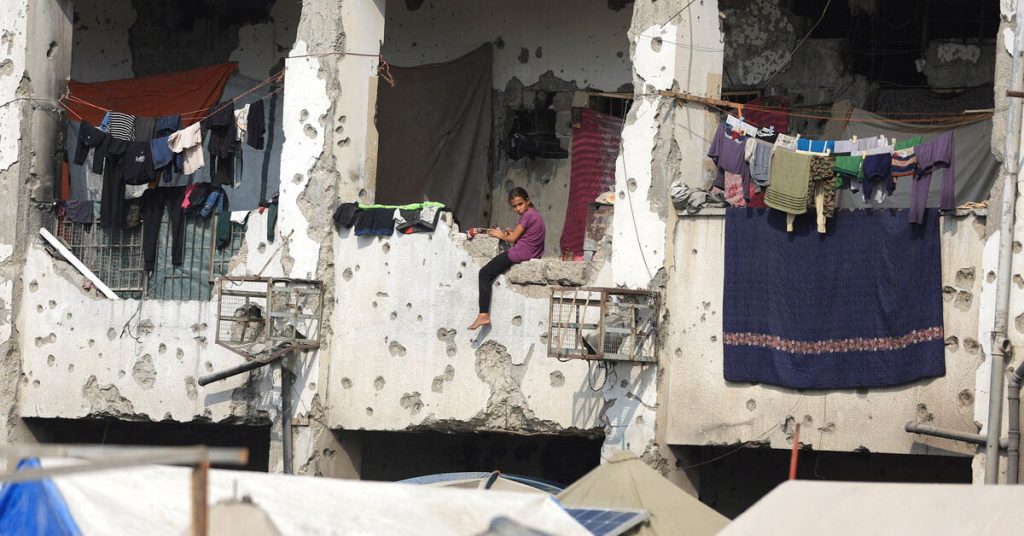The recent ceasefire in Gaza has brought little respite for its residents, as devastating storms have swept through the region, exacerbating the already dire humanitarian crisis. Heavy rainfall and storm surges have flooded tent camps, destroying shelters and spreading disease among the displaced population. The situation is particularly critical for the nearly 1.5 million Gazans forced from their homes following months of conflict, now struggling to survive in increasingly precarious conditions. This article focuses on the Gaza storm damage and the urgent need for assistance.
The Devastating Impact of the Storms on Gaza’s Displaced
The current crisis follows more than two years of intense conflict, culminating in the Hamas attack of October 7, 2023, and the subsequent Israeli military response. The vast majority of Gaza’s population has been displaced, finding refuge in crowded tent camps mainly constructed with flimsy materials. The recent weather has demonstrated the vulnerability of these makeshift shelters. Reports indicate widespread destruction of tents, spoiled food and medicine, and significant damage to essential infrastructure.
The Hamas-run Gaza government estimates losses from the storms reach approximately $4.5 million. This figure includes the cost of replacing over 22,000 destroyed tents, as well as addressing the impact on vital supplies and essential services. Local aid organizations are sounding the alarm, estimating an urgent need for at least 300,000 new tents to provide basic shelter.
Life in the Camps: A Struggle for Survival
For families like Abu Mohammed al-Qarra, the storms represent a new layer of suffering. He described how the rain infiltrated his family’s tent, located just meters from the seashore, soaking their possessions and forcing them to scramble to salvage what they could. “There is no warmth, or anything,” he stated, expressing the desperation felt by many. The family was displaced to the al-Mawasi camp in southern Gaza after an earlier truce dissolved, but securing a suitable location proved exceptionally difficult. Ultimately, they were left with a precarious spot close to the sea, offering limited protection from the surging waves.
The experience highlights a broader issue: the inadequate suitability of many camp locations. Many were hastily established with little consideration for weather conditions or basic sanitation. Furthermore, the availability of space is severely limited, pushing families to settle in exposed areas. Maintaining a minimal level of protection often relies on makeshift sand walls built and maintained by the residents themselves – walls that quickly succumb to the force of storm surges.
Disease Outbreaks and Deteriorating Hygiene
Beyond the immediate damage to shelters, the storms have significantly worsened existing health risks within the camps. The lack of proper sanitation facilities is a major concern. Most residents rely on rudimentary cesspits, which overflow during heavy rain, contaminating the surrounding areas. Compounding the problem, access to landfills and waste management facilities is limited or non-existent, leading to widespread accumulation of garbage.
Hospitals in Gaza, already stretched beyond capacity, are reporting a surge in gastric illness and skin diseases, directly linked to the unsanitary conditions and widespread malnutrition. Pools previously used for rainwater harvesting have become breeding grounds for sewage, posing a significant threat of widespread contamination. The deteriorating situation is raising fears of a public health crisis. This underscores the urgent need for improved sanitation systems and access to clean water – critical components of disaster relief in Gaza’s humanitarian crisis.
Urgent Need for Aid and Sustainable Solutions
The United Nations has acknowledged the sharp deterioration of conditions following the rain, with aid teams distributing essential supplies like tents and tarpaulins. However, the scale of the destruction demands a far more substantial and coordinated response. Amjad al-Shawa, head of the Palestinian NGOs Network, emphasizes the critical need for 1.5 million new tents, stating that existing tents are worn out and insufficient protection against the elements.
The focus must shift beyond immediate emergency aid toward more sustainable solutions. Simply replacing damaged tents is not enough. Efforts must be made to establish safer, more durable shelters, along with functional sanitation systems and waste management facilities. The restoration of water and sanitation infrastructure, including temporary water lines and sewage pits, is paramount. Likewise, repairing small solar installations is crucial to restoring access to electricity, a vital resource for healthcare and other essential services. The long-term recovery of Gaza depends on addressing these fundamental needs. This requires committed international support and a focus on rebuilding a more resilient and sustainable infrastructure.
Looking Ahead: Addressing Gaza’s Long-Term Needs
The Gaza storm damage is a stark reminder of the vulnerability of the displaced population and the fragility of the infrastructure. While immediate relief efforts are vital, a longer-term strategy is crucial. This includes not only providing housing but also investing in comprehensive disaster preparedness and climate resilience measures. The situation requires a concerted effort from international organizations, governments, and local aid groups to address the urgent needs of the affected population and build a more secure future for Gaza. The ongoing displacement in Gaza demands a sustained commitment to humanitarian assistance and long-term recovery programs. Dealing with the root causes of the crisis – and preventing further displacement – remains a fundamental necessity for lasting peace and stability in the region.

